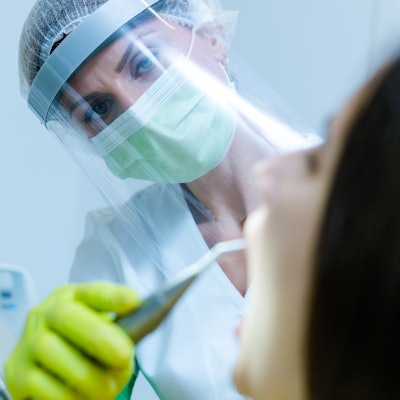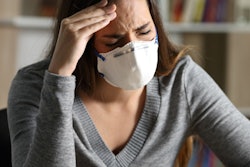
More than 40% of patients with COVID-19 experienced dry mouth, according to a review published in the Journal of Dental Research that looked at the prevalence of oral symptoms associated with SARS-CoV-2 infection. Taste disorders and oral lesions were also common in infected patients.
The review was a six-month update to previously published research on the prevalence of oral symptoms in COVID-19 cases. In the analysis of roughly 65,000 patients with COVID-19, xerostomia, taste disorders, and the presence of oral lesions often pointed to SARS-CoV-2 infection.
"The prevalence of oral signs and symptoms and whether they result in direct SARS-CoV-2 infection or merely represent secondary manifestations are paramount," wrote the authors of the report, led by Dr. Juliana Amorim dos Santos from the University of Brasilia Department of Dentistry (Journal of Dental Research, July 29, 2021).
The new report, like the first systematic review conducted in June 2020, analyzed COVID-19-related oral manifestations. The update assessed the original 40 primary studies included in the first review, as well as an additional 143 new studies published in the first half of 2021. The number of patients also ballooned from 10,228 to 64,876.
Xerostomia was the most prevalent oral symptom identified with COVID-19 patients, occurring in 43% of patients. It was a new symptom identified by the authors and replaced altered taste as the more commonly reported oral symptom of COVID-19.
"The inclusion of studies from many countries might have contributed to this adjustment," wrote the authors.
While taste disorders were no longer the top oral symptom of COVID-19, they were still prevalent in the population. A total of 38% of patients experienced a taste disorder, and the authors found a significant association between taste disorders and a positive SARS-CoV-2 test. There was also a significant association between taste disorders and experiencing a mild or moderate case of COVID-19 for female patients, but the authors said those results "presented low certainty of evidence."
The prevalence of taste disorders varied based on location, ranging from 14% in Africa to 49% in Europe. Drug effects, peripheral nervous system tropism, and local inflammatory response could all be reasons for the difference, the authors wrote.
Among the taste disorders, hypogeusia, or a reduced ability to taste things, was the most common, affecting 34% of patients. This was closely followed by dysgeusia, or the perception of altered taste, which impacted 33% of patients. Another 26% of patients experienced the complete loss of taste, or ageusia.
Many patients with COVID-19 often presented with oral mucosal lesions, although the presence of lesions may suggest impaired immunity or the presence of co-infections rather than a direct result of SARS-CoV-2 infection. Lesions with an aphthouslike clinical pattern were the most prevalent, followed by herpeslike lesions, candidiasis, geographic tongue, parotitis, and angular cheilitis. The tongue, lips, and palate were the most frequently affected locations.
"The reanalysis of current evidence suggests that triad xerostomia, taste dysfunction, and oral mucosal lesions as common manifestations in patients with COVID-19," the authors wrote.
The report included a large number of patients and primary studies, but it was not without its shortcomings. The authors did not look at the association between taste disorders and age groups, and they found it difficult to compare oral manifestations and analyze mucosal manifestations.
Based on their findings, the authors hypothesized that SARS-CoV-2 impacts the salivary glands, resulting in taste disorders, xerostomia, and bad breath. They called for more studies to investigate the physiological mechanisms between the most common oral symptoms and COVID-19.
"These outcomes are under discussion, and more studies will be necessary to confirm their association with direct SARS-CoV-2 infection in the oral cavity," the authors concluded.



















